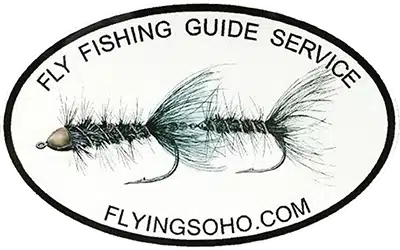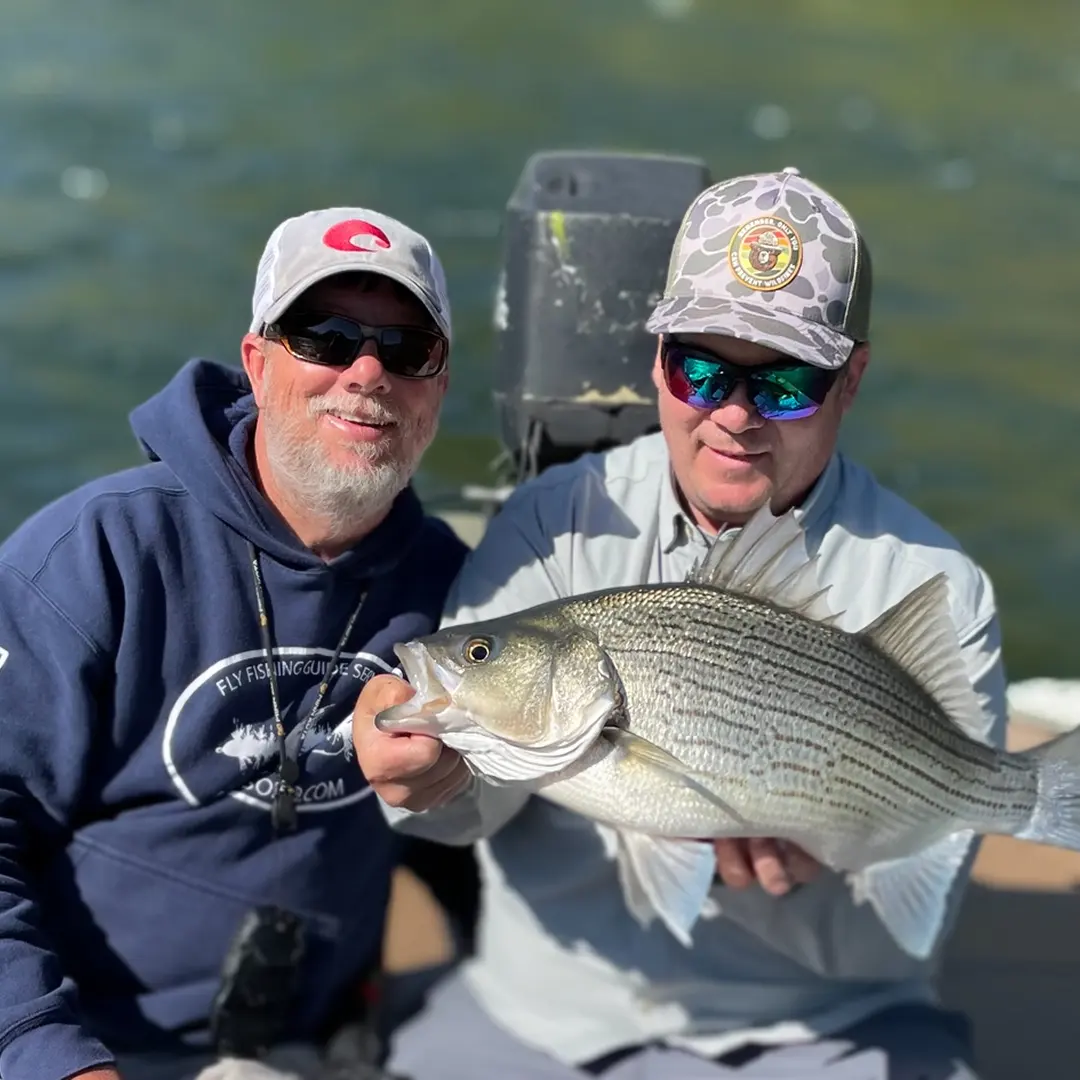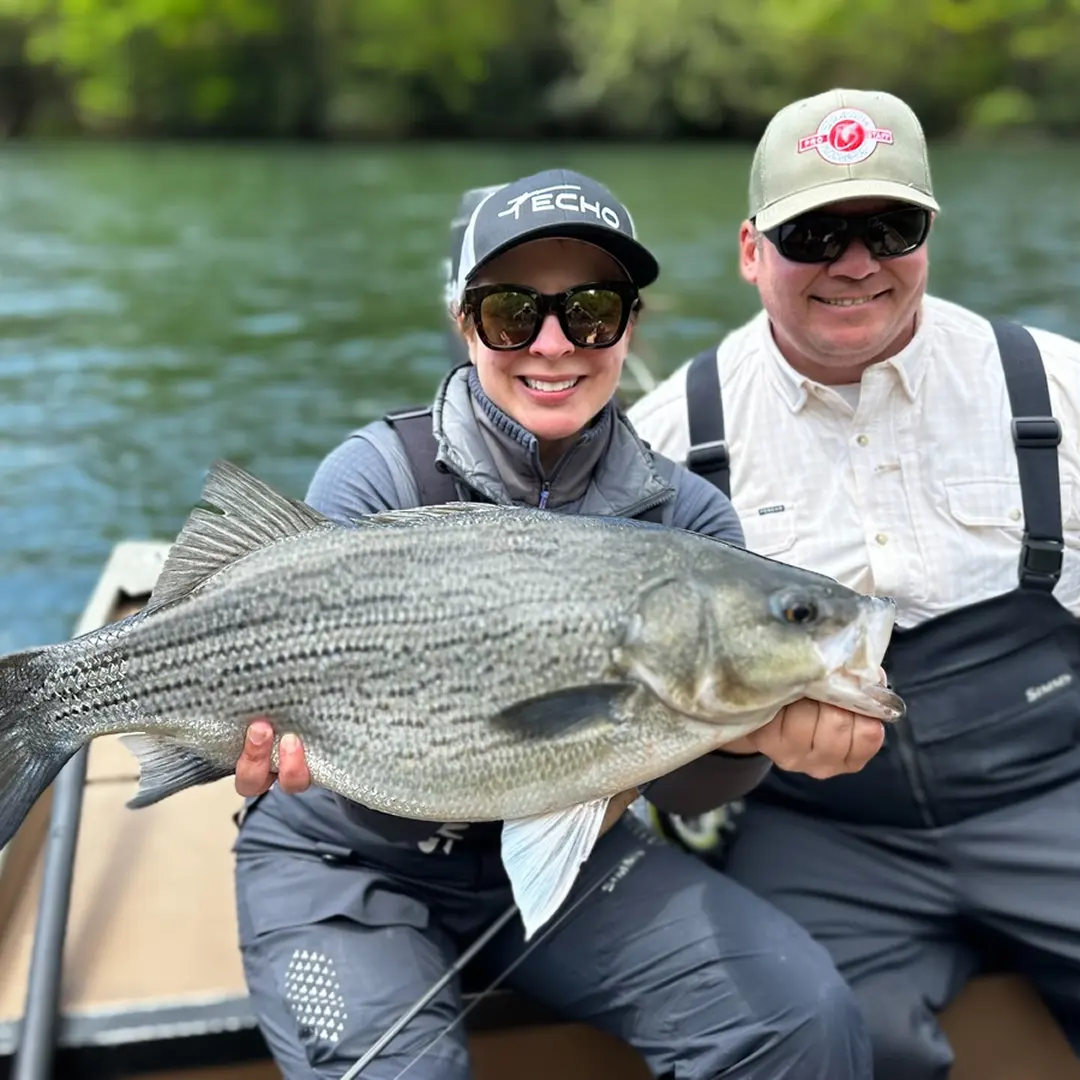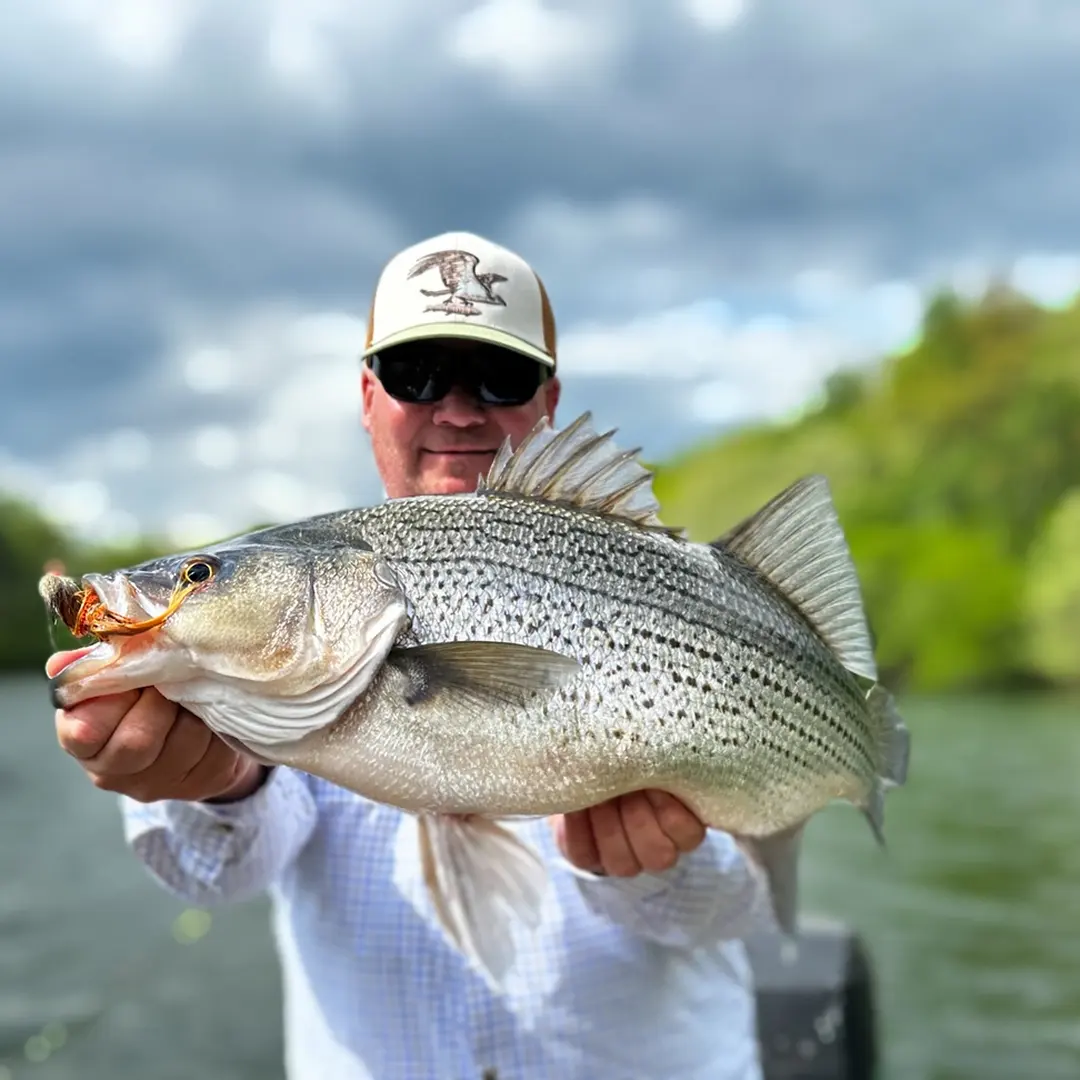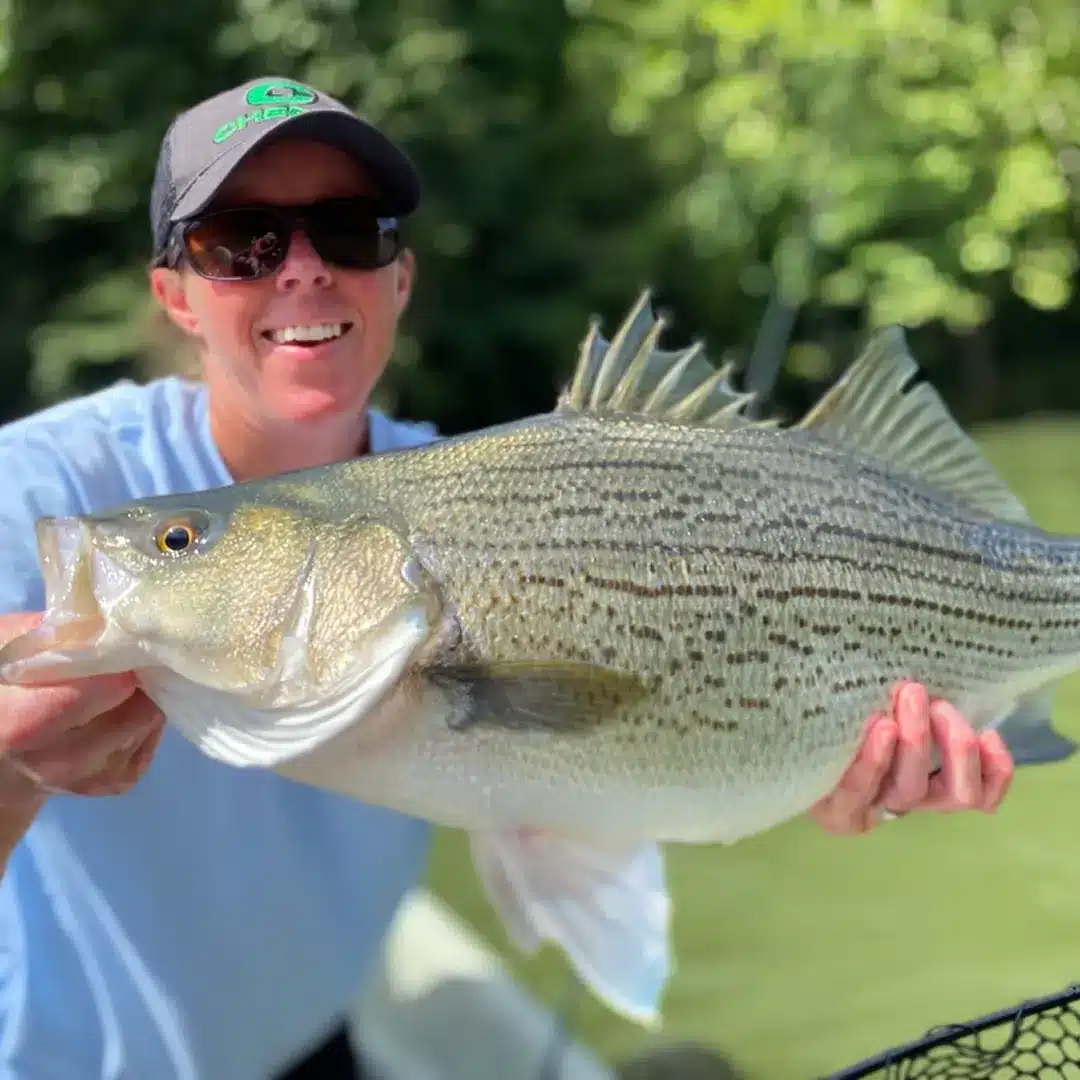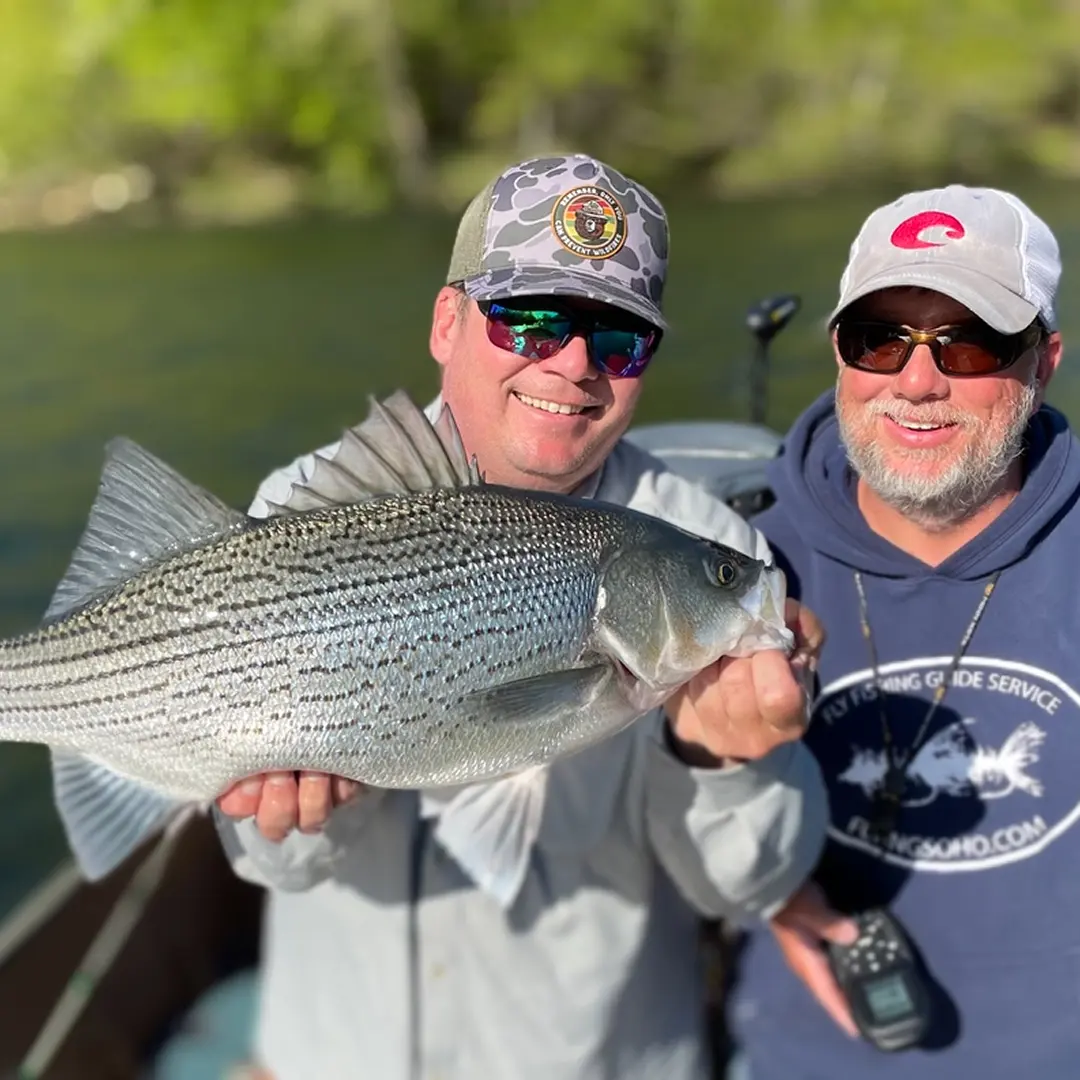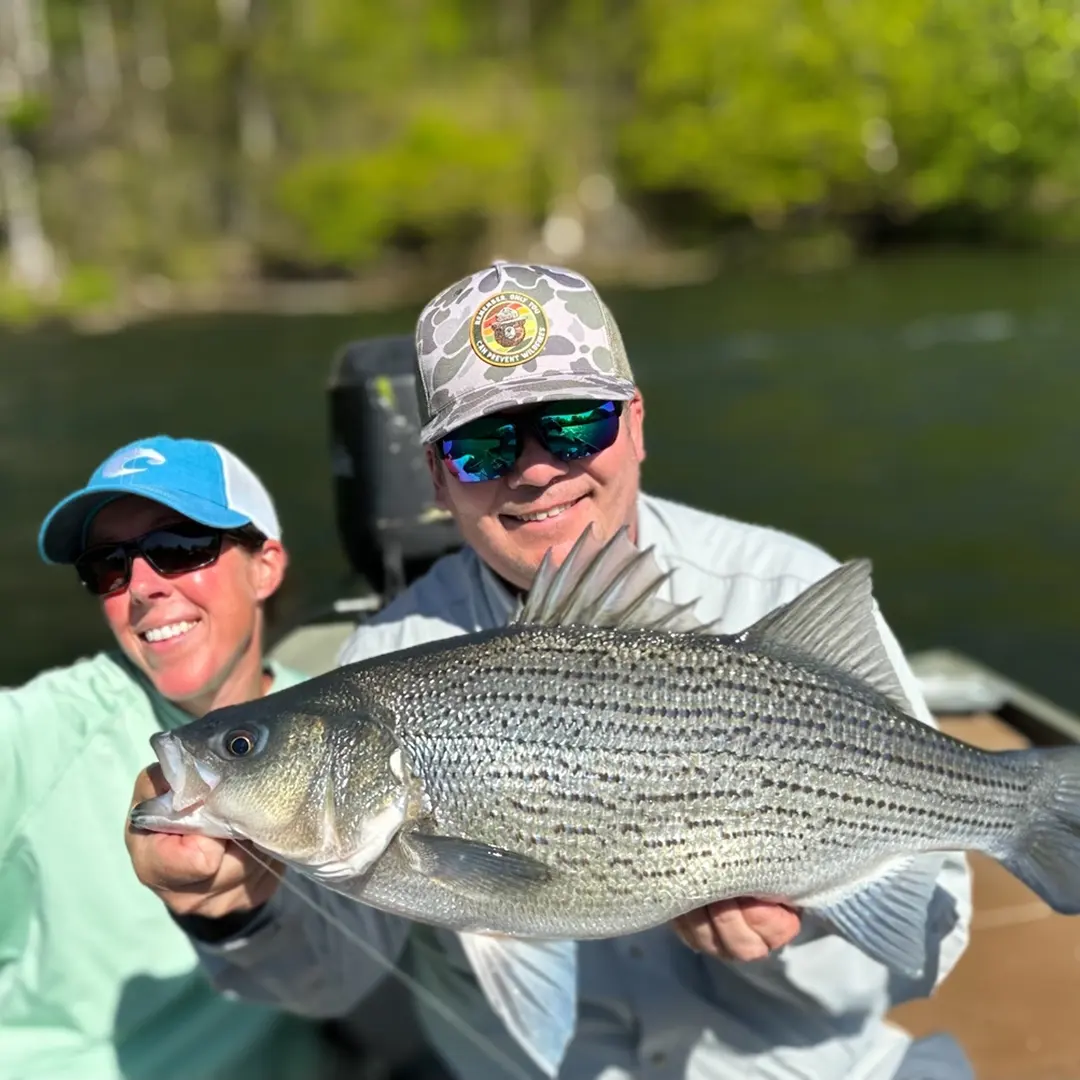Trophy Striped Bass and Hybrid Striped Bass Fishing Tennessee
Trophy Striped Bass and Hybrid Striped Bass attacking a big streamer is an experience hard to top with a fly rod! These fish are apex predators, we focus on throwing big articulated streamers—4 to 8 inches long—on 8-weight rods with sinking lines, hunting for explosive eats in deep runs, current seams, and bait-rich slack water. These aren’t subtle takes—stripers and hybrids hit like a freight train, and you’ll know instantly when you’re connected to something serious.
With the jet boat, we cover water quickly and position ourselves in areas where baitfish are stacked up—often near dam tailraces, impoundment zones, or river junctions. The early morning bite or low-light conditions often bring the biggest flurries of action, especially during warmer months when these fish push upriver in force. Some of these stripers measure well past 40” and they’ll test your gear and your grip with powerful, bulldog runs. Every cast carries the possibility of a once-in-a-lifetime fish, we have captured them up to a staggering 54”.
This is not passive fishing—it’s aggressive, visual, and high-adrenaline, with big streamer patterns swimming through clear Southern Appalachian water and predators on the prowl. If you’re looking for a trip where the drag screams and your arms feel it the next day, chasing trophy stripers and hybrids on these rivers is the one.
Target Species
Fishing for Striped Bass and Hybrid Striped Bass on the South Holston and Watauga Rivers changes dramatically throughout the year, with their behavior driven largely by water temperature, bait movement, and dam releases. Understanding these seasonal shifts is key to consistently targeting trophy-caliber fish.
Throughout the year, we adapt our approach based on river flows, bait movement, and weather, using jet boats to stay mobile and flexible. If you’re chasing a personal best or just want to feel the raw power of a striper crushing a streamer, there’s a season for that—and we’ll put you in the right spot when it happens.
Winter (December – April)
Winter is one of the best times to chase big stripers and hybrids. As surface temps drop, these fish will have followed the baitfish and migrated out of the rivers into the upper sections of reservoirs. We will often chase schools of birds around the lake. As the birds follow the bait over the water, giants chase the bait under it. We focus on slow-rolled streamers on sinking lines, letting the fly stay in the strike zone longer. This is a prime time for targeting truly giant fish—the ones that make a career.
Spring (April – June)
In spring, stripers and hybrids make a false spawning run up into the rivers from our impoundments, moving farther up the rivers and becoming more aggressive. The water warms, baitfish activity picks up, and the bass become more willing to chase fast-moving streamers. You’ll find them on current seams, creek mouths, and channel edges, especially during high or rising water. This is one of the most consistent times of year to put numbers and size in the boat.
Summer (June – September)
Many of the striped bass and hybrids will stay in the rivers until September / October and will feed very aggressively in the cooler, fast moving waters of the river. Early mornings and low-light windows can produce solid action—especially near dam tailwaters where water temps stay cool. Think faster retrieves and more reaction-style fishing in the summer months, but with the same trophy length potential.
Fall (October – December)
As water temperatures begin to drop again, stripers and hybrids move back out of the rivers into the reservoirs to feed heavily. This is a second prime window, especially in October and November, when baitfish migrations trigger feeding frenzies. We’ll target these fish in the river or the lake this time of year, it all depends on the baitfish and where their migration is at. Fish will chase aggressively and often school up, offering visual, surface-level mayhem. It’s a great time for sight-fishing, big streamer presentations, and covering water to find blitzing fish in ambush zones.
Where We Fish
Our rivers are dynamic, with shifting flows and baitfish movement, so we’re constantly adjusting—using the jet boat to stay mobile and hunt actively. Here’s a breakdown of the type of structure we target and the general zones we focus on throughout the year:
- Deep Holes Below Dams
Tailraces and plunge pools below South Holston and Watauga dams are prime holding areas. These spots provide cooler water, oxygen, and a conveyor belt of baitfish, especially in winter and early spring. We focus on swinging or stripping big streamers through the depth changes and seams created by dam releases. - Current Seams and Eddies
Stripers love edges—anywhere fast water meets slow water. These seams act as feeding lanes where bait gets trapped or funneled. We’ll position the boat to swing or drift streamers right along these lines, often getting grabs right where the current softens. - Ledges, Drop-offs, and Channel Bends
These fish use bottom contour just like trout. We target sharp drop-offs, submerged ridges, and channel swings where fish can sit just off the current and ambush prey. Hybrid Striped Bass especially like these mid-depth shelves during the spring and fall. - Creek Mouths and Bait Funnels
Where small tributaries or side channels enter the main river, baitfish get piled up—and so do the predators. These are great ambush zones, especially when bait is moving in the spring and fall. A streamer fished just outside the mouth or down the foam line can get hammered.
What's Included
Trophy fishing can be hard work! We include everything you need to ensure the day is as enjoyable as possible. Along with all the fishing equipment, each full-day trip includes a delicious lunch, soft drinks, bottled water, and snacks. For half-day trips, snacks, soft drinks, and bottled water are also provided.
Trips include:
- Rods
- Reels
- Flies
- Leaders
- Tippet
- Drinks
- Snacks
- Full-day trips include lunch
What To Bring
Please remember to bring a valid TN fishing license, as well as clothing and gear suited to the day’s weather. Polarized sunglasses, a brimmed hat, and sun gear like a buff are highly recommended—especially during the summer months between 11 AM and 3 PM. Pack sunscreen, a lightweight long-sleeve shirt, quick-dry pants, and footwear with a heel strap (such as sandals or water shoes). If rain is in the forecast, be sure to bring a quality rain jacket, rain pants, and waterproof boots to stay comfortable on the water.
- TN fishing license
- Hat
- Polarized sunglasses
- Sunscreen
- Sun gear
- Rain gear (if necessary)
- We’re pretty flexible with what you bring, but we do request you do not bring spinning gear. We are exclusively fly fishing.
Trophy Striped Bass and Hybrid Striped Bass Fishing Tennessee FAQs
Have a question? We've got answers. If you do not see your question answered below, please do not hesitate to contact us.
